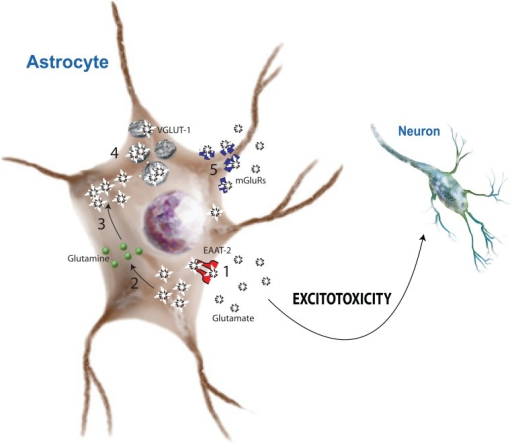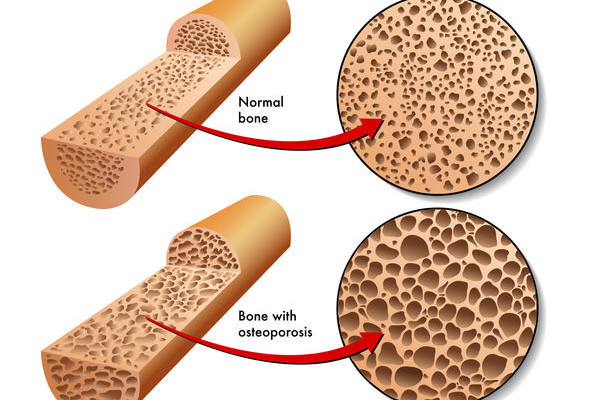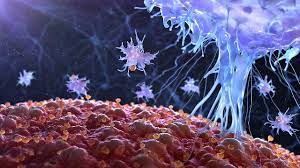Lipopolysaccharides (LPS) and Endotoxins Lipopolysaccharides are large molecules composed of sugars and fats which are endotoxins found within a bacterial cell. LPS is secreted as part of the normal physiological activity of membrane vesicle trafficking and protects the membrane from certain chemical attacks. LPS activates the hosts’ immune response by stimulating white blood cells (i.e., … Read More “Lipopolysaccharides (LPS) and Endotoxins” »
Category: Conditions Caused by Tick-borne Illness
A blog category for conditions caused by tick-borne illness. Diseases are carried by ticks that are infected with bacteria, viruses, or parasites.
Dyslipidemia and Lyme Disease Dyslipidemia is abnormal lipid metabolism. Patients who have had or have Lyme Disease often have significant abnormalities in their lipid metabolism. This results from chronic inflammation and prolonged activation of the proinflammatory cytokines such as IL-1, IL-6, and tumor necrosis factor-alpha (TNF alpha). Elevated cholesterol, triglycerides, VLDL, and LDL are commonly … Read More “Dyslipidemia” »
Scleroderma and Bartonella… Is there a connection?Dr. Marra has been treating patients with tick borne illness since 1999 in both Westport Connecticut and Seattle Washington. She has had two patients with severe Raynaud’s Syndrome, a Scleroderma diagnosis, and a positive Bartonella henselae serology test, one from each coast. Dr. Marra does not think that this … Read More “Scleroderma” »
Low Dose Naltrexone (LDN) in Tick-borne Illness Naltrexone is an old drug originally used to help patients wean off of alcohol and heroin and other opiate medications. However, low dose Naltrexone (LDN – 3-4.5mg) has been found to be very helpful to some patients with chronic pain and low immune function, in particular chronic Lyme … Read More “Low Dose Naltrexone” »
Glutamate Excitotoxicity in the Brain Glutamate is an excitatory neurotransmitter found throughout the brain in small concentrations, and is directly related to the ability to learn, attend, and cognitively function. Glutamate levels are physiologically held in check by conversion to gamma-Aminobutyric Acid (GABA), an inhibitory neurotransmitter also found throughout the brain. The conversion of Glutamate … Read More “Glutamate Excitotoxicity” »
Lyme Disease and Osteoporosis Patients who have had or currently have Lyme Disease often experience an increased likelihood of developing osteopenia and/or osteoporosis (conditions of progressive bone loss, particularly in women). This may, at least in part, be due to the fact that calcium is sequestered from the bone by pathogenic organisms in order to … Read More “Osteoporosis” »
One of the things that happens in chronic tick-borne illness (TBD) is immune dysregulation in both T cell and B cells. T cells mature in the thymus gland and are a form of white blood cell. T cell differentiation occurs in the thymus gland allowing for CD4 (T helper), CD8 (T suppressor), and CD57 cells … Read More “Immune Dysregulation” »
Multiple Sclerosis (MS) was first described by Jean-Martin Charcot in 1868 and is an autoimmune inflammatory disease in which the myelin sheath (composed of fats) around nerve axons of the brain and spinal cord are damaged. Chronic inflammation leads to widespread demyelination, especially in the white matter areas of the brain where there is a … Read More “Multiple Sclerosis (MS)” »
POTS (Postural Orthostatic Tachycardia Syndrome) POTS (postural orthostatic tachycardia syndrome) is a serious complication of chronic tick-borne diseases, and often renders patients bedridden for many months. POTS is generally found in more women than men suggesting a hormonal component to the etiology as well. Typical symptoms of POTS include: Fatigue Headache Tremors Syncope (fainting) Dizziness … Read More “Postural Orthostatic Tachycardia Syndrome” »
Meat Allergy – Alpha-gal Allergy Meat allergy, also known as alpha-gal allergy is an allergic reaction to galactose-alpha-1,3 galactose, when the body becomes overburdened with IgE antibodies (typically found in food allergies), on contact with this carbohydrate. This is the first known food allergy to a carbohydrate, as most are allergies to proteins. Lone Star … Read More “Meat Allergy” »










